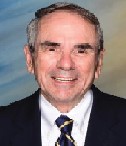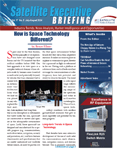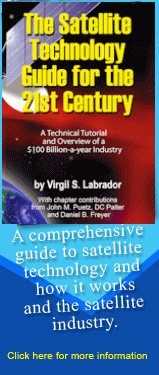Satellite Industry Disruption
By Bruce Elbert
Austin, Tex, January 15, 2025 - Major changes and challenges seem the norm in the satellite industry – what was once stable and predictable for established players has become a foreign battlefield in many ways. We didn’t seem to have so many expensive satellite failures, congestive corporate mergers, and disruption by new and previously untried technological models. I want to help us understand what we have at present and what kinds of prescriptions can resolve this conundrum and put our industry, and we participants, in a safe and productive mode.
 |
| Image courtesy of Boeing |
Yes, we must seize this change, yet we must recapture what allowed 60 years of commercial space to become a practical medium for business and government. In particular, two generations of space technologists and entrepreneurs have passed and many lessons are lost from memory. Some of us are still around but few are influential enough to hold fast to the truth. Even if we found that scripture or electronic file containing such lessons learned, how can we still make them relevant in the age of the Internet, cloud computing, graphics processors and Artificial Intelligence (AI)? So, let’s step back, grab hold of our assets (and there are many), and look ahead to the new frontier.
What’s Happening?
Industry turnovers in the past few years have startled those who have been around for decades. The long-term trend had included few total failures of in orbit satellites; but, now we’ve seen these of the elaborate designs in ways that boggle the mind. The failure of the Viasat 3 antenna to deploy seems incredible as this design has flown successfully for over two decades. The apparent spontaneous destruction of Intelsat 33e would have to be the first ever of that kind of event in GEO. And Inmarsat 33e was declared a total loss almost immediately after its initial checkout. Other kinds of failures were of rather low-tech items like power converters yet these still impaired the fundamental mission. Clearly, something was done differently (or not at all).
Supply chain is a term that rolls easily off the lips and is often used by leadership and the media to explain why a given program is running late or failed to meet requirements. When broken down into its components, the supply chain has internal and external features. COVID challenged literally everything involved with designing, constructing and launching satellites. If you shipped across the sea, vessels couldn’t dock; if you needed staff to physically assemble and test spacecraft, people had to work remotely and factories were locked down. Another aspect was the trend over the past few decades to outsource critical components and even a major portion of a spacecraft. As a result, the whole process was disrupted – and that disruption lasted years after lock downs ended. Interestingly, there is a trend now for manufacturers to pull almost the entire design inside. But, the necessary expertise would have been lost or never developed due to outsourcing and retirements. Therefore, we cannot capture the problem at the gross supply chain level.
There has been a shift in the design of communications payloads, from pure analog RF construction with common transponders to complicated structures with phased arrays and digital signal processing for greater functionality and efficiency. The design and engineering of a digital payload has proven to be more extensive since signals are not simply turned around, bent pipe style, and amplified as they existed from the ground. Advanced payloads play a greater role as they can modify signal structure. However, the particulars of the waveforms and scheme for networking users must be identified before the satellite is constructed. These functions are internal to the processor, embodied in microcircuits (FPGA or ASIC) and instructed by software code that could be uploaded at any time. That code can be changed is a good thing and perhaps allows some correction post launch. But, it cannot overcome structural problems or failure modes. Because of these factors, software-defined payloads require a long development cycle and some programs such as OneSat have experienced delays. Part of the problem is that the performance and versatility that were promised during contract negotiations may fall short as the timeline progresses toward delivery.
"...The private space sector continues to do a remarkable job in terms of innovation and response to economic realities. We are in a period of high inflation and government involvement. The way forward will involve creativity and possibly public-private partnerships to activate the financial and human resources needed to develop future satellite communications systems and build out the networks that meet demands, both public and private..."
While issues abound with space segment development and operation, the associated ground segment has not escaped scrutiny. Tracking, Telemetry and Command (TT&C) facilities for GEO satellites are well established and little has transpired of a negative nature. However, the communications ground segment, consisting of user terminals of various types and gateways at fixed locations, remains a challenge for new operators and applications. As a general rule, the total cost of the ground segment equals that of the space segment, so one would think that the attention ought to be in the same proportion. One positive example for a new system introduction is how Hughes Electronics introduced DIRECTV with the first low-cost digital TV home receiving systems in parallel with the launch of the satellites and construction of a fully digital broadcast facility. They did this through partnerships and excellent management of established manufacturers like Thomson Consumer Electronics and Sony.
It was interesting to hear from the head of the still absent Kuiper LEO broadband system when he spoke about their small consumer terminal concept while the space segment had not experienced even a single launch of the requisite satellites. If the original Iridium LEO system is any example, the ground segment can easily derail the business even if the satellites become a reality. It is remarkable that SpaceX put in place so many of their first and second generation user terminals in time to exploit the first thousand Starlink LEO satellites. Reportedly, all of this technology development and production were under the direct control of SpaceX. This roll out, still underway, gained respect for this startup, including positive publicity from introducing Starlink where it was really needed in Ukraine and North Carolina.
How to Recover?
The private space sector continues to do a remarkable job in terms of innovation and response to economic realities. We are in a period of high inflation and government involvement. The way forward will involve creativity and possibly public-private partnerships to activate the financial and human resources needed to develop future satellite communications systems and build out the networks that meet demands, both public and private. The trend now is for dual use systems that satisfy the interface and functional requirements of users and platforms no matter where they may be.
Past generations of engineers, operators and entrepreneurs did their job effectively to bring us to the current state. But, the cracks across boundaries identified above need to be addressed with working age and student populations who are the force to effect development and change, as appropriate. In particular, we must restore the fundamentals of physical science. From Google Artificial Intelligence (AI):
- They provide a basic understanding of how the natural world operates, enabling technological advancements, solving global challenges, and improving our daily lives by explaining phenomena like motion, energy, matter, and forces, which underpin many modern inventions and discoveries across various fields like medicine, engineering, and communication; essentially acting as a foundation for further scientific exploration and innovation.
AI is powerful and is ratcheting up its potential. In my opinion, however, it cannot replace human instinct and innovation, both of which are key to invention and extension. Virtual and physical robots do what they are told to do, yes, by humans. You must ask the right questions, observe what is happening, create a solution, and build it properly. This process is inherently human. We see in the recent movie, Oppenheimer, that it took a team of brilliant scientists along with practical “hands on” people to establish the atomic age. Likewise, we need those resources to take the space age forward into an expanded future.
The old hands have retired and, in many cases, passed on. So, the key to an effective space resource is recruitment, education, training and mentoring. The focus should be on the technical aspects as opposed to sales and marketing, legal and strategy. Vision is important, for sure, but a technical foundation is vital to convert vision into reality. Arthur C. Clarke was asked what factor would take space forward; his answer was “technology”. In short, we must teach physical sciences and engineering (like they do in China and India), not narrow specialties like robotics, AI and sustainability. Also, companies and government agencies need to bring back technical education and training like existed before COVID.
One avenue that’s still available is the technical satellite industry conference held every year by a joint effort of the American Institute of Aeronautics and Astronautics (AIAA) and FGM Events. This is the International Communications Satellite Systems Conference (ICSSC) coupled with the Ka Broadband Communications Conference, which have been going on since 1966 and 1995, respectively. This joint conference is the only place where satellite-related scientific and engineering papers are presented in public. The next schedule meeting is October 22 – 24, 2025, in Turin, Italy. More venues like these will contribute to better designs, operations, and the advancement of the art and science of space communications.
-------------------------
 Bruce Elbert is the Founder and President of Application Technology Strategy LLC (www.applicationstrategy.com). He is a satellite industry expert, communications engineer, project leader and consultant with over 50 years experience in communications and space-based systems in the public and private sectors. Areas of expertise include space segment design and operation in all orbit domains, systems architecture and engineering, ground segment systems engineering, development and operation, overall system performance improvement, and organizational development. He can be reached at: bruce@applicationstrategy.com
Bruce Elbert is the Founder and President of Application Technology Strategy LLC (www.applicationstrategy.com). He is a satellite industry expert, communications engineer, project leader and consultant with over 50 years experience in communications and space-based systems in the public and private sectors. Areas of expertise include space segment design and operation in all orbit domains, systems architecture and engineering, ground segment systems engineering, development and operation, overall system performance improvement, and organizational development. He can be reached at: bruce@applicationstrategy.com






